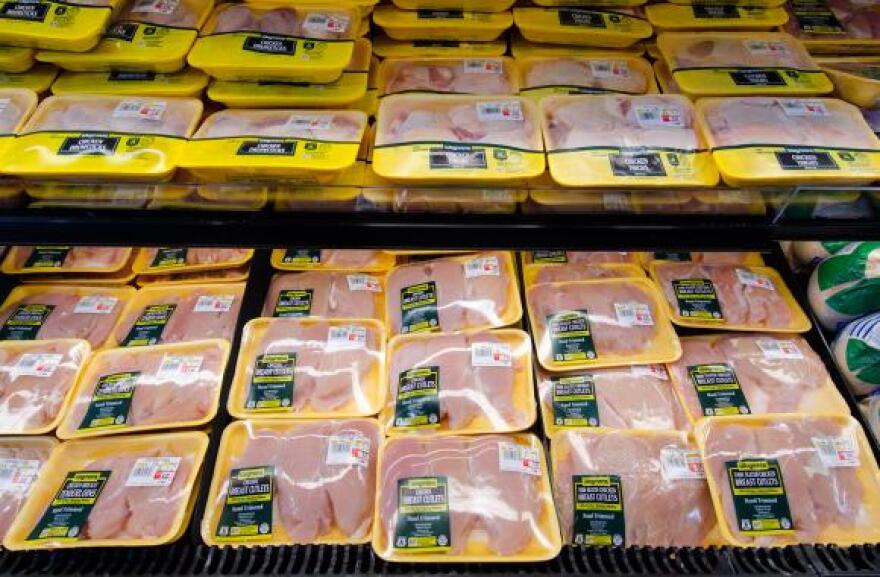Food safety regulators are hoping new rules will reduce the number of Americans sickened by salmonella bacteria found on the chicken they eat. Currently, salmonella is estimated to cause about 1 million illnesses a year.
The U.S. Department of Agriculture is cracking down on the amount of salmonella it will allow on certain poultry products. Poultry companies will be required to keep incidences of salmonella to under 15 percent of the chicken parts they produce under new standards released this month.
The USDA has had success in cutting the proportion of whole chickens found with salmonella. Now it’s focusing on cut-up chicken parts and on ground chicken and turkey, says James Dickson, a professor who studies food safety at Iowa State University.
“I think it makes the industry look at things in, maybe, a different way and say, ‘We’ve made progress in one aspect of the production and processing, now we need to make progress in some of these other areas,’” Dickson said.
As more and more consumers move away from buying whole chickens, concentrating food safety efforts on cut-up parts and ground poultry is particularly important. Harvest Public Media’s Peggy Lowe pointed out last year that ground and processed poultry are also more likely to carry salmonella risk.
The regulations, however, don’t target the particularly troublesome strains of salmonella responsible for some of the worst illness outbreaks, according to NPR’s Dan Charles. Some have called for a plan that seeks to reduce specific strains of bacteria, such as Salmonella Heidelberg.
The USDA hopes the new directive will eventually stop 50,000 people annually from getting sick.










